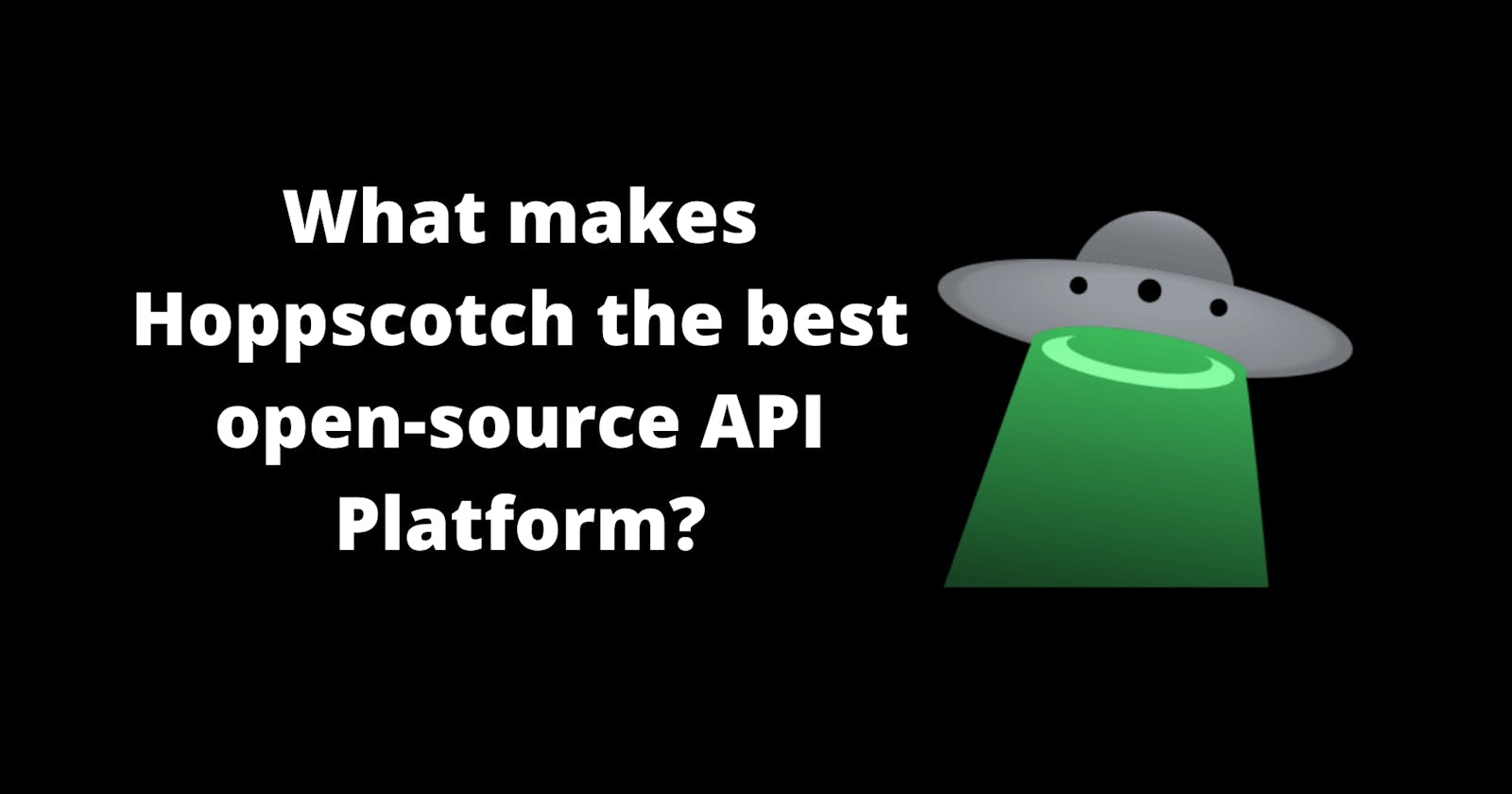Web APIs have been around for nearly 20 years, and now the world is moving fast towards the API-first development approach. And when it comes to building products using the API-first approach, they are to be treated as the first-class citizens for the project. Thus, managing APIs from design to development to testing and documentation is a huge yet very crucial task for the backend developers in organizations.
However, we have Hoppscotch to the rescue. Let's dive in to understand what makes it the go-to solution for the developers.
What is Hoppscotch?
Hoppscotch is an open-source tool that helps in building HTTP requests that we send to the server, thus helping us work easily and effectively with APIs. It is an HTTP Client that allows us to make HTTP requests through an interface while validating the results we receive from API requests.

This makes it an excellent tool for dissecting RESTful APIs created by others or testing ones created by yourself. It provides a slick user interface for making HTML requests, eliminating the need to write a slew of code only to evaluate an API's operation.
Before we move further to decipher what makes Hoppscotch the best open-source API platform, let's learn why do we need something like Hoppscotch.
What is an API lifecycle?
APIs are not simply a component that you can configure and forget about. APIs must be planned, created, deployed, and monitored to remain aligned with business needs and to recognize when it is time to retire them. Thus, an API lifecycle is the journey of an API from the cradle to the grave i.e. from planning to deployment.
Here are the different stages of an API lifecycle, discussed in brief -
Planning: Planning and design are essential components of every API development project. Assign business team members the task of determining which services and capabilities an API should expose. Specific business needs should be documented, and the initial API goals should be refined into a thorough collection of functional and non-functional requirements.
Development: The development phase of an API is concerned with putting the API into action based on the plan and design. Implementing and establishing the API as quickly as feasible is a critical go-to-market strategy that many firms are concerned about. API development should always revolve around three considerations:
- How you will monitor the API's usage, performance, problems, and other key metrics.
- Security features include OAuth 2.0 authorization and API-key validation.
To provide proper API access, performance and accessibility issues such as throttling and rate-limiting must be addressed.
The ease and speed with which the intended API is built alongside the API design are critical for a solid market strategy for a company's API.
Testing: Each iteration of the API must be rigorously tested for functionality, performance, and user approval by developers. Unsatisfactory results can be looped back to developers to help them construct and refine the API code.
Deployment: The deployment of the API to a secure environment for simple discovery and consumption is critical to the success of your API strategy. It is critical to note that to ensure guaranteed and high-quality API performance, the APIs in production must also be monitored.
Retirement: APIs can be expanded and updated by developers over time to increase business value, however, each API incurs infrastructure and support expenses over time. Software teams eventually remove obsolete APIs and API versions to avoid wasting resources supporting them.
Deprecation is an unavoidable aspect of the API lifecycle. It is the stage at which support for an API's version, or, in many cases, the entire API, is terminated. Thus, to withdraw APIs without disrupting day-to-day operations, software teams must have an end-of-life plan in place.
Having discussed the stages of the API lifecycle above, it becomes more clear that managing APIs is an immense task, and thus, we have API platforms like Hoppscotch for help. Now, let's unravel the features that make Hoppscotch this special!
Features that stand out
Lightweight and Fast: Hoppscotch has been crafted with a minimalist UI, that is powered by the web and lets you send requests and receive responses in real-time, thus making it a blazing fast experience.
Moreover, Hoppscotch comes with a powerful yet lightweight PWA that enables offline support, low memory/CPU usage, and a desktop app-like user experience.
To download PWA, read more here.
Power of Websockets: Hoppscotch lets you establish full-duplex communication channels over a single TCP connection, thus, helping to send and receive data with basic or token authentication. It can also receive a stream of updates from a server over an HTTP connection without resorting to polling.
Collections & History: Hoppscotch lets you organize your requests into folders and collections for easy access. These collections can be edited, deleted, moved, exported, imported, and replaced.
It maintains a list of requests by syncing the request entries with local session storage to reuse with a single click.
History can further be sorted by any field such as - Star, label, status code, method, timestamp, etc, and can be deleted one-by-one or all together.
Proxy: Hoppscotch is packed with a proxy mode that can be enabled from Settings to access the blocked APIs. This feature lets you hide your IP Address, fix CORS (Cross-Origin Resource Sharing) issues, access APIs served in non-HTTPS (http://), and use a custom Proxy URL.
Environments: An environment in Hoppscotch refers to a set of variables that you can use in your requests. You can use environments to group related sets of values together and manage access to shared API data if you are working as part of a team.
Pre-Request Scripts: Pre-request scripts are bits of code that are associated with a request and are executed before the request is issued.
These could be quite useful in the following scenarios:
- Add a timestamp to the request headers.
- In the URL parameters, send a random alphanumeric string.
- Requests with Pre-Request Scripts are marked in the History.
API Documentation: Documentation is an essential component of any collection or API. Good documentation assists users of your collection in understanding what it does and how each request works. Furthermore, detailed API documentation informs your customers about the endpoints that are available and how to interact with them properly.
Hoppscotch helps you create and share dynamic API documentation easily, quickly alongside letting you add your requests to Collections and Folders, export Collections, and easily share your APIs with the rest of your team and import Collections.
i18n: Hoppscotch has an i18n support that lets you experience the app in your language, although, translations aren't available for all source and target language combinations.
Auth + Sync: Hoppscotch comes with a built-in Google and GitHub sign-in feature that lets you sign in and sync all your data from anywhere, anytime.
Post-Request Tests: It also enables you to write tests associated with a request that is executed after the request-response. It can be used to check the status code as an integer, filter response headers, and parse the response data.
Notes: Hoppscotch also lets you take quick notes on anything and everything and share it with your team.
Conclusion
In a nutshell, Hoppscotch is the ultimate open-source API platform that helps you simplify each step of building an API and streamlining collaboration in teams such that you can better APIs and faster than ever before.
Do check out more about Hoppscotch here or give it a try here.
If you found this insightful, do let me know your views in the comments. Also, any kind of feedback is welcome. In case you want to connect with me, follow the links below:

